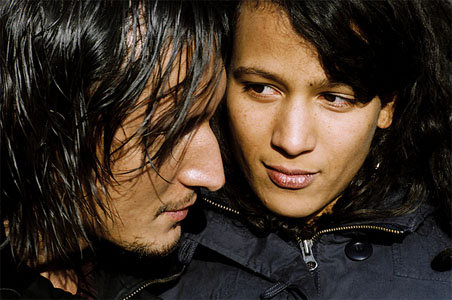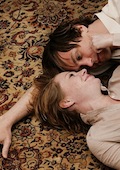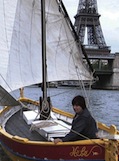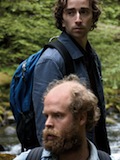As 2012’s celebrations of women’s history month draw to a close, we take a moment to salute the contributions of female auteurs. Often marginalized in “official” histories of cinema, women have been integral in shaping cinema from practically the moment of its inception, proving themselves in the creative and social vanguard of their times—some only properly recognized in retrospect. From Alice Guy’s development of some of the conventions of narrative cinema to Maya Deren inspiring generations of boundary-pushing experimenters to Agnès Varda helping kick off the French New Wave, female auteurs have shaped larger film movements, styles, and trends.
Claire Denis
Maren Ade
Agnès Varda
Su Friedrich
Kelly Reichardt
Pascale Ferran
Chantal Akerman
Lynn Hershman Leeson
Adrienne Shelly
Julie Dash
Marjorie Keller
Dana Plays
Ida Lupino
Maya Deren
Ruth Ann Baldwin
Alice Guy
This list (in its full form, right) is not intended to be definitive in any way, and just as is the case with any list, the worthy-but-excluded far outnumber the comparatively tiny number of inclusions. A shortage of female filmmakers of color and/or of non-Western origin may indicate that if female filmmaking practice is often marginalized in general, those making films outside of America and Europe face even more hurdles in getting their films made, seen, available, and appreciated. Please feel free to submit your own overlooked favorites in the comments section: Germaine Dulac, Leni Riefenstahl, Lina Wertmüller, Barbara Hammer, Jane Campion, Mira Nair, Sofia Coppola? The list is potentially endless.
This particular collection is intended to be generative in nature, to inspire further exploration and study. Below is the first installment, featuring the films and the work of filmmakers available to view here at Fandor and arranged in reverse chronological order according to the featured film’s release date.
1. Claire Denis (1948–)
Claire Denis got her start in film by working as an assistant on productions by an impressive list of iconoclastic filmmakers, including Jim Jarmusch, Jacques Rivette, Wim Wenders, and Costa-Gravas. But upon the release of Chocolat (1998), her first feature film, it was clear that a unique cinematic vision had announced itself. In the numerous films that followed, Denis has tackled topics as diverse as African politics in the postcolonial era (Chocolat, Beau Travail, 1999, White Material, 2009) to modern dance choreography (the documentary Vers Mathilde, 2005) to horror as a genre (Trouble Every Day, 2001) that still manage to exhibit a coherent creative vision through Denis’s unmistakable visual and narrative style. A great part of this visual distinctiveness has to do with her celebrated working relationship with master cinematographer Agnès Godard, who has photographed nearly all of Denis’s films to date. The complexly shaded family drama 35 Shots of Rum (2009) is by Denis’s own account inspired by the work of Japanese director Yasujiro Ozu, and it was widely considered one of the best films of its year.
2. Maren Ade (1976–)
Maren Ade is a young German filmmaker who directs, produces and writes. After making two short films at film school in Munich, her first feature film, The Forest for the Trees (2003), won the Special Jury Prize for World Cinema at the 2005 Sundance Film Festival. But it was with the overwhelming critical success of her second feature film, Everyone Else (2009), that earned Ade numerous citations as a major and exciting new directorial talent. Written and directed by Ade, Everyone Else involves a rather familiar story of a young couple whose tenuous relationship is put to the test while on seemingly idyllic vacation. But in Ade’s capable hands, the film transforms into a penetrating examination of love, desire, and insecurity within the context of a romantic relationship. The film is a favorite here at Keyframe, the subject of a fascinating analysis by Glenn Heath Jr. and a video by Kevin B. Lee.
3. Agnès Varda (1928–)
French filmmaker Agnès Varda has made films for over half a century, earning hers the title of “Grande Dame of the New Wave” along the way. Long overshadowed by more famous and commercially successful friends and colleagues, in recent years Varda has come into her own— and her debut feature film, 1955’s Le Pointe-Courte, is now generally considered one of the touchstone films of the French New Wave movement. Varda, who admits to sometimes feeling intimidated by the New Wave “boys club” dynamic, responded by increasingly focusing on female characters and their concerns in her work, spanning from Cléo from 5 to 7, undoubtedly the most female-centric of all New Wave films, to her César-winning Vagabond in 1985. Always oscillating between narrative and documentary filmmaking—and just as often innovatively combining the two—in the 1990s and 2000’s Varda increasingly focused on her documentary work, culminating in The Gleaners and I (2000) and the autobiographical The Beaches of Agnès (2008), both of which received practically universal acclaim. Though she has indicated that the latter will stand as her last film as she increasingly focuses on installation work and other projects, it is impossible to know what the seemingly indefatigable 83-year-young filmmaker will come up with next.
Also of particular interest is Réponse de femmes (Women Reply) (1975), a short film Varda made to specifically address the Women’s Rights movement in France.
4. Su Friedrich (1954–)
Su Friedrich is generally recognized as an innovative documentary filmmaker and a pioneer of queer cinema. Many of her most celebrated films begin with intimate revelations, often autobiographical: her relationship with her mother in The Ties That Bind (1985), the coming out process in Hide and Seek (1997), etc.—which she the then uses as a springboard to investigate a number of topics, personalizing abstract political and theoretical concepts via a unique synthesis of documentary, narrative, and experimental modes of filmmaking. While many of her films deal with lesbianism and female sexuality, her more recent work also gives voice to her strong political views, such as From the Ground Up (2007), which attempts to understand the larger implications of the global coffee industry. Explore more of Friedrich’s work at her website, sufriedrich.com.
With only a handful of films to her name, Kelly Reichardt has managed to distinguish herself in the field of American independent cinema. After her first feature film, River of Grass (1994), earned a great deal of attention and resulted in several Independent Spirit Award nominations, Reichardt all but disappeared for a decade before making and releasing three films in quick succession: Old Joy (2006), Wendy and Lucy (2008), and Meek’s Cutoff (2010). All three films inspired accolades for Reichardt’s distinctive and uncompromisingly minimalist filmmaking style, and the films themselves received an impressive number of festival awards. The first of these films, Old Joy, is a quiet and nuanced film involving two old friends who go on a camping trip in the Oregon wilderness, and, as Glenn Heath Jr. discovers, in some ways can be seen as a unique take on the evergreen “buddy film” genre. A visiting professor of film at Bard College since 2006, Reichardt is currently in preproduction on her next film project.
Jesse Ataide writes for Keyframe and his own blog, Memories of the Future.









